A SMALL GUIDE TO HANOI’S OLD QUARTER
A visit to Vietnam’s capital is not complete without wandering Hoàn Kiếm District, otherwise known as the Old Quarter. The neighborhood’s street food, markets and historical sites make it a fitting home base, with easy access to the rest of Hanoi’s attractions.
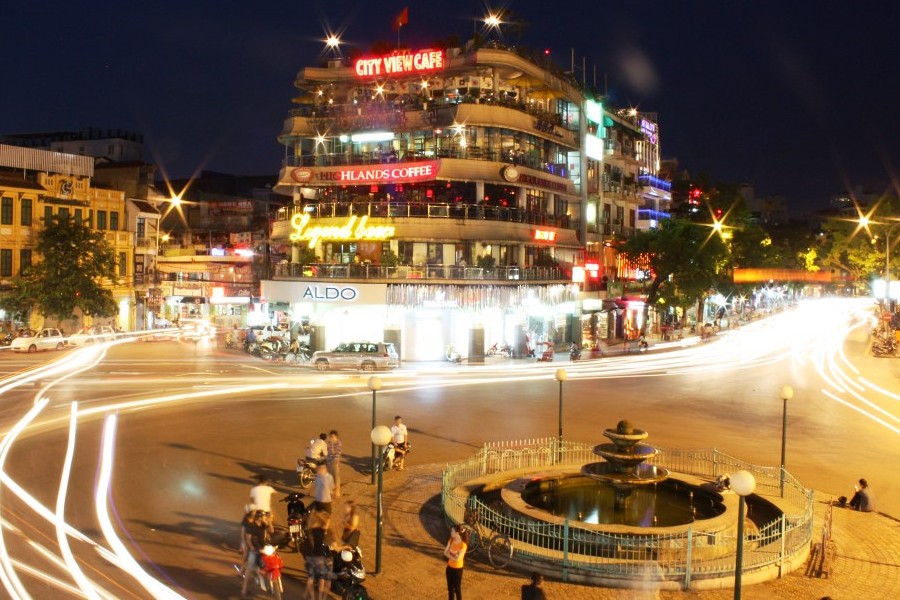
Make no mistake: the “old” part of the district’s name by no means signifies forgotten or even a slowing pace. Exploring Hanoi’s Old Quarter, like much of the city, requires you to be on high alert and quick on your feet. Crossing a street? Look both ways twice and walk forward confidently, steadily, at an even pace, as hordes of mopeds, bikes and cars whizz around you, often without tapping the breaks. This sense of urgency, though, is part of the thrill. When visiting the Old Quarter, you are thrust into the daily rush of local life.
The neighborhood remains rooted in its commercial history, which dates back to the 13th century, when artisans and craftsmen began living and working in trade-based clusters around King Ly Thai’s 11th century palace. Later, street names were based upon the merchandise (Hang) sold in each area, from silk to silver to paper. While many of the original products have changed, the district remains a commercial hub, evident in the shops, cafes and eateries that have taken over the French-colonial style shop-houses, built over a century ago (though Hanoi itself is over 1,000 years old!). Businesses run in the storefronts, and families reside in the back rooms and courtyards.
The 36 Old Streets (a common moniker, despite the thoroughfares’ doubling in number) is very walkable, once you get the hang of confidently marching into the fray. The streets remain lined with a blend of new and old businesses, a curious mix of hip and historic, and no shortage of spots to people watch while enjoying a strong, sweet Vietnamese coffee or bia hoi (“fresh” draught beer).
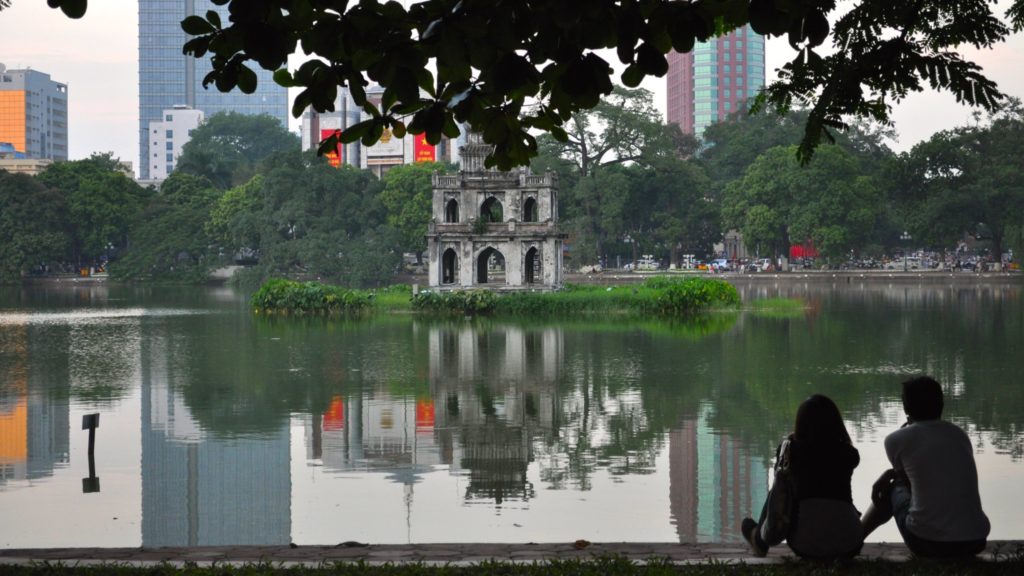
As in the neighborhood’s earliest days, Hoàn Kiếm Lake remains a central meeting place. A path circumscribes its tranquil green waters, offering a peaceful place to walk or rest on a bench under the shady canopy of trees. While the area is a popular meeting point all day, if you can, lace up your sneakers and head here around sunrise to kick your day off with the walkers and joggers circling the lake. Or, opt for a more contemplative start by joining one of the many groups practicing tai chi.
Hard to miss is the small, picaresque temple set on a tree-covered island in the northern area of the lake. To visit Ngoc Son Temple (Temple of the Jade Mountain), walk over the scarlet bridge, charmingly dubbed the Welcoming Morning Sunlight Bridge (Cầu Thê Húc). While students visit to pray for academic success before exams, another draw is the preserved giant turtle on display, captivating for both its size (551 pounds) and its link to local lore. Legend has it that King Le Loi defeated the Mongols using a sword given to him by the Golden Turtle God that lived in the lake. After being beckoned by the god to return the sword, the king renamed the body of water Hoàn Kiếm Lake, meaning “the lake of the returned sword.”
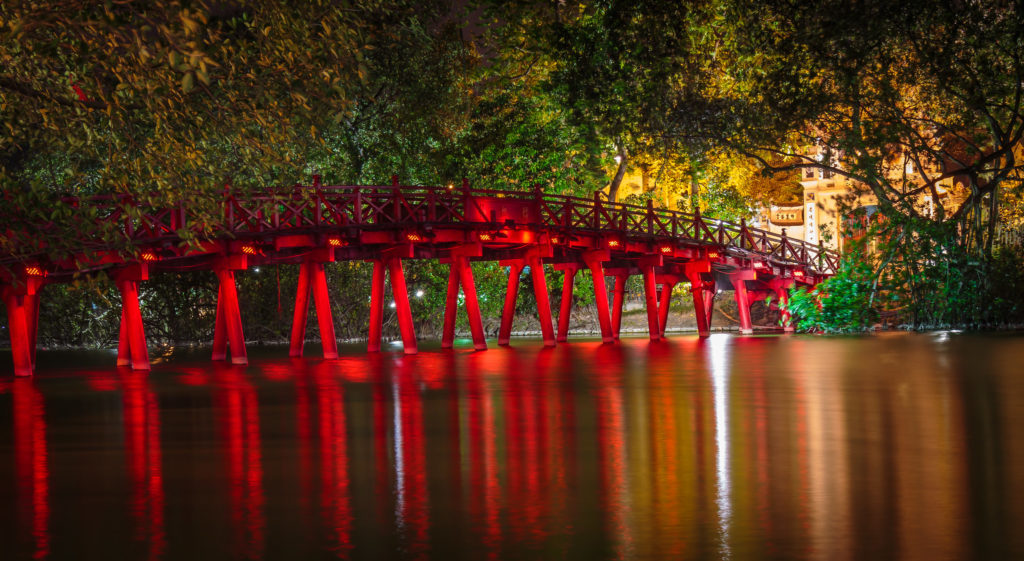 Welcoming Morning Sunlight Bridge, Cầu Thê Húc (Photo: J Durok via Flickr / CC BY-NC-ND 2.0)
Welcoming Morning Sunlight Bridge, Cầu Thê Húc (Photo: J Durok via Flickr / CC BY-NC-ND 2.0)This legend is one of many performed at Thang Long Water Puppet Theatre (57B Đinh Tiên Hoàng), across from the lake, near Ngoc Son Temple. Vietnamese water puppetry dates back to the 11th century, when practitioners concocted a clever use for flooded rice paddies: the risen water became a stage. Sticking with tradition, the theatre’s stage is a rectangular pool of water, where small, colorful puppets are deftly maneuvered by puppeteers hidden behind a screen. Accompanied by a live orchestra and costumed singers, the puppets splash and dart across the water, acting out folktales, often with a humorous slant. While five hour-long shows run each day, tickets sell out fast. Book yours early to secure good seats.
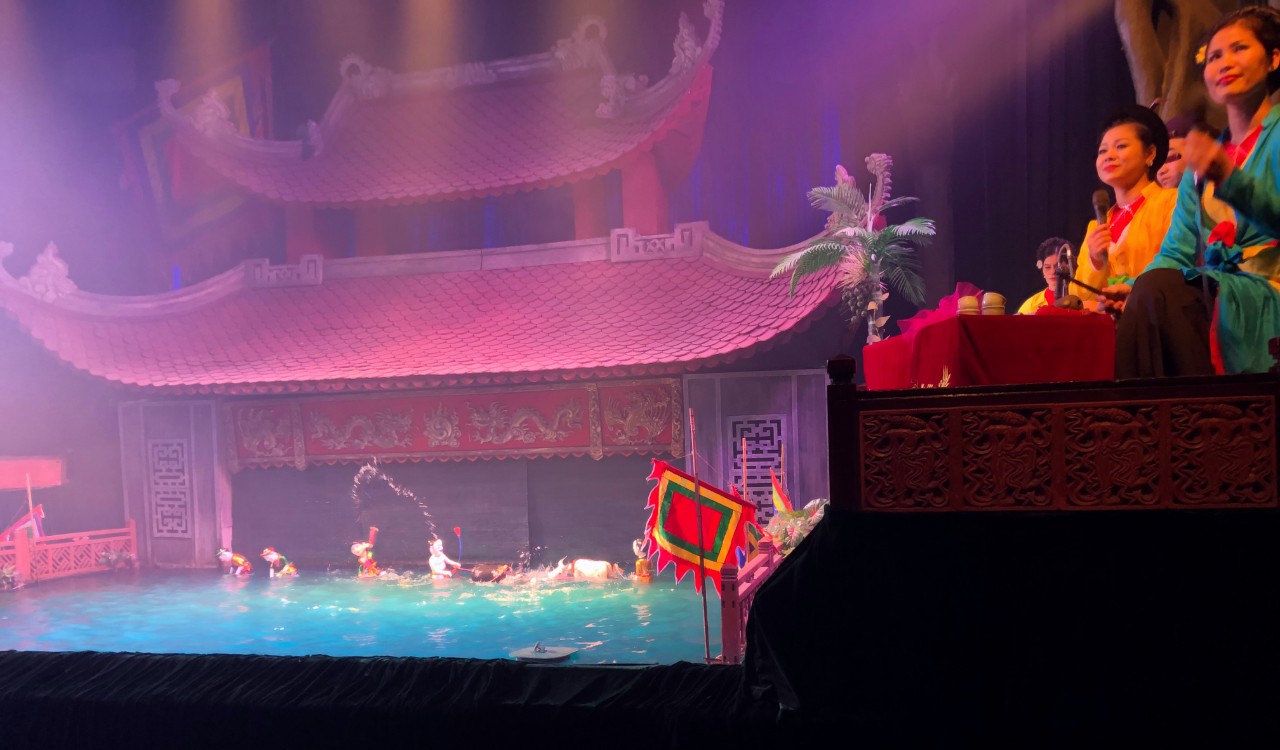
Venture just outside the Old Quarter to visit the Hoa Lo Prison Memorial (1 phố Hoả Lò), otherwise known as the Hanoi Hilton, where the former U.S. Senator and naval aviator John McCain was held captive, along with other prisoners of war during the American (or Vietnam) War. While a section of the prison-turned-museum tells the story of the war and showcases artifacts from the detained prisoners’ lives, a larger portion commemorates the Vietnamese patriots who were imprisoned there during the French occupation. A note for those traveling with youngsters: Vietnam’s struggle for independence is most poignantly, and chillingly, captured by the lifelike statues of prisoners in shackles and an original guillotine.
Eating and Drinking
There is no shortage of delicious food in the Old Quarter, whether you grab spring rolls to go, pull up a plastic chair at a street food stall, relax in a café or relish the blasting aircon at a trendy restaurant. Better yet, enjoy a mix of these experiences, along with nightlife that fills the air with the echoes of music and chatter.
The streets are polka dotted with cafes and eating spots that range from sidewalk stops with simple plastic tables and chairs to grand rooftop views. For the latter, head to Cafe Phố Cổ (11 Hàng Gai, 4th floor). Finding the café can be tricky, which only adds to the fun. Head through the silk shop on the ground floor and down an alley to find the characterful café, filled with recycled furniture and décor, from signs etched in Chinese to hanging bird cages. After ordering, walk upstairs to the rooftop, where you can sip cà phê trứng, egg coffee, and marvel at the view of the lake by day and the glittering city lights by night.
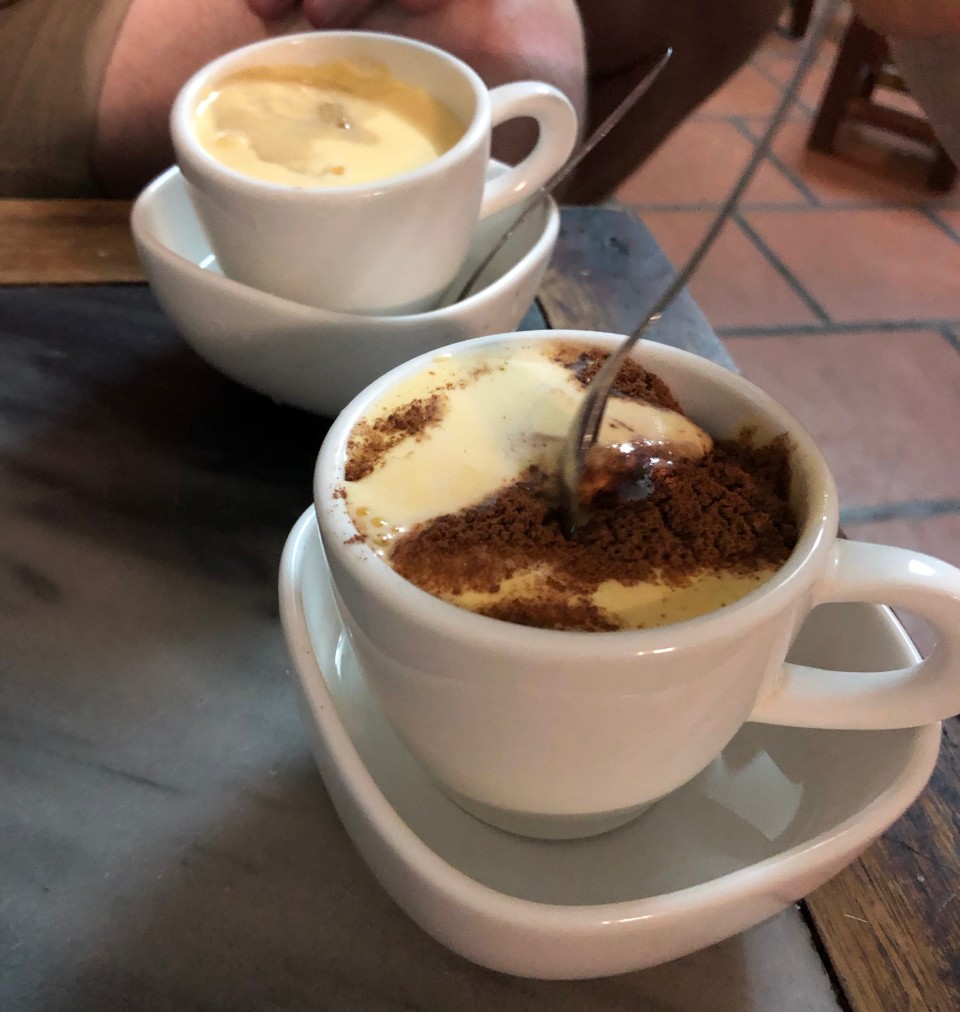
Speaking of egg coffee, the original recipe is still whipped up at Café Giảng 39 (39 Nguyễn Hữu Huân), likewise located down a narrow alleyway, labeled “Egg Coffee Lane” on the café’s sign. Though the location has changed since the original owner, Nguyen Giang, began whipping up his unique coffee concoction in 1946, you can still get his sweet, creamy mixture of Vietnamese coffee powder, sweetened condensed milk, egg yolk, butter and cheese. Don’t overthink the ingredients. Just sip and smile…and be sure to lick that frothy mustache from your upper lip!
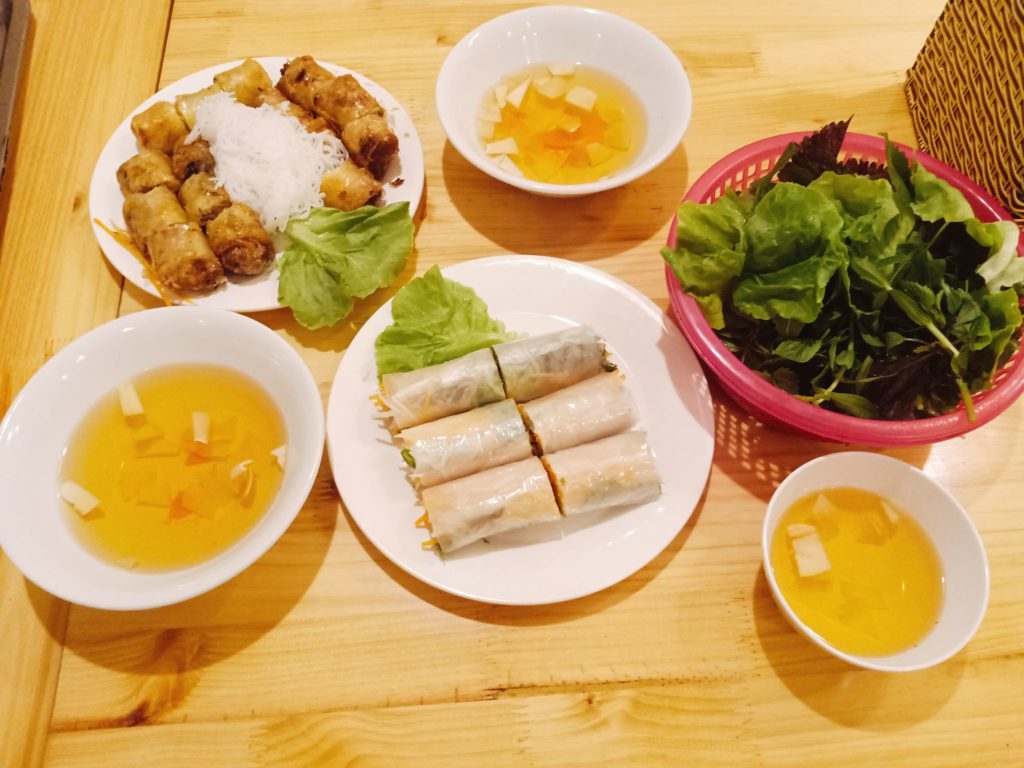
Whether fresh or fried, spring rolls are a must-eat while in Vietnam. At Viet Spring Rolls (65A Bát Đàn) choose from the traditional summer roll–filled with shrimp, pork, veggies and herbs—or the fried version, each served with the requisite fish sauce. Other house specialties include bún mắm–a pungently scented soup filled with fermented fish, squid, pork, fish balls and noodles—and various soup, rice and noodle dishes.
For lunch or dinner, head to Mr. Bay Mien Tay ( 79 Hang Dieu Street) restaurant, recognizable by the chefs frying fresh bánh xèo nam bộ at the entrance, arguably some of the best in town. The crispy yellow crepes–filled with vegetables, pork and shrimp, beef, seafood, or chicken–are served with fresh greens and herbs to roll up in rice paper and dip in tangy fish sauce. Other delights include dragon egg pancakes, fresh or fried spring rolls, salads and rice noodles.

A popular any time meal is xôi, sticky rice. Pop into Xôi Bà Thảo (41 Đường Thành) and sit elbow to elbow with locals enjoying a warm bowl of this comfort food, topped with your choice of savory fixings, from crab pate and soy sauce to egg, fried onions, mushrooms or pork floss. The secret behind the dish’s tantalizing, full-body flavor? A drizzle of chicken fat.
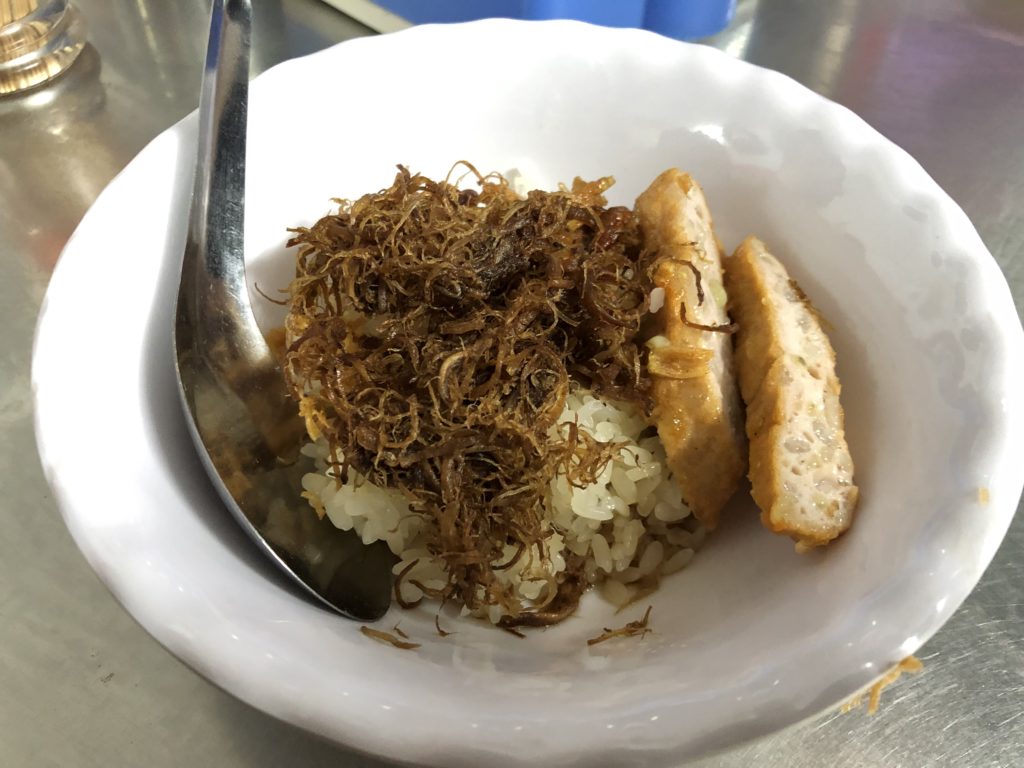
Come nightfall, Bia Hoi Junction (where Tạ Hiện meets Lương Ngọc Quyến) is slammed with people enjoying fresh beers, snacking and relaxing at the bar and restaurant mini-tables that spill out into the street. Hosts will flash menus and smiles, attempting to lure you to take a seat.
For a break from the bustle, have a pint of craft brew or cider at The Hill Station (2T Tạ Hiện). Check the blackboard for what’s on tap, a list that will likely include award-winning hits from Pasteur Street Brewing. Also enticing are their creative rice wine cocktails, like the spicy chili-infused Frozen Flower. Complement your bev of choice with tasty tapas–crostinis, paninis or a cheese board.
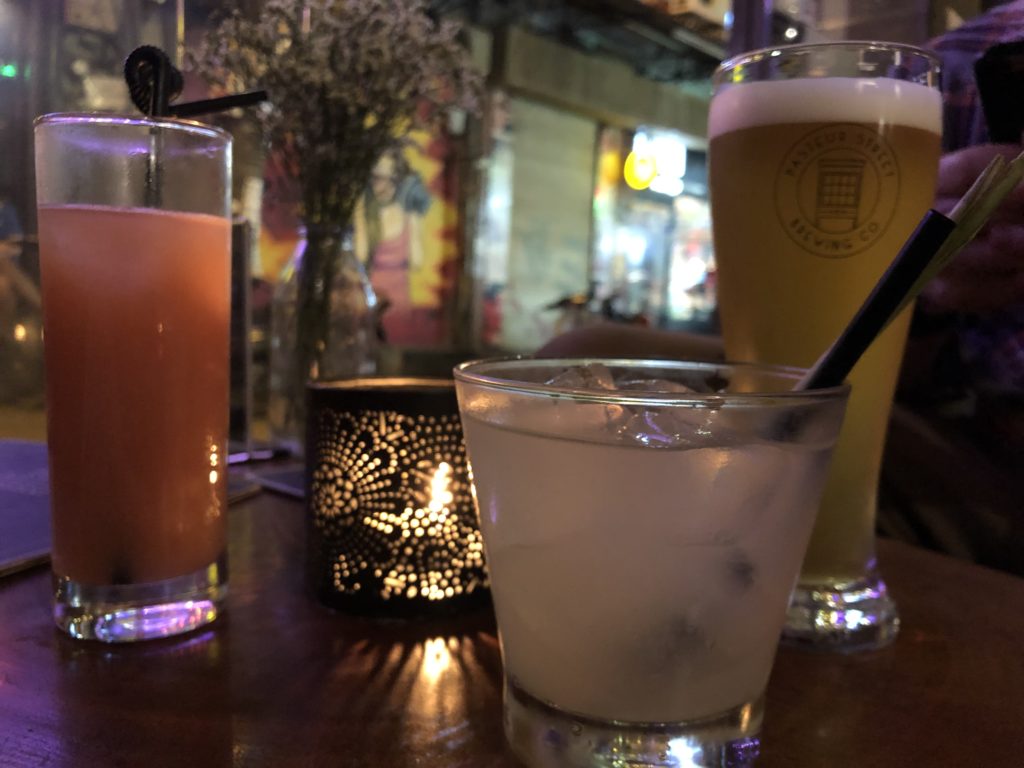
Street Food
The Old Quarter is known for street food. While the stalls and street-side vendors are plenty, knowing what and how to order can feel intimidating. For the daring, follow your nose, point at what looks good and mime your way through an order. For those who’d prefer more guidance, there are many food tour companies, each with their own hidden gems to reveal.
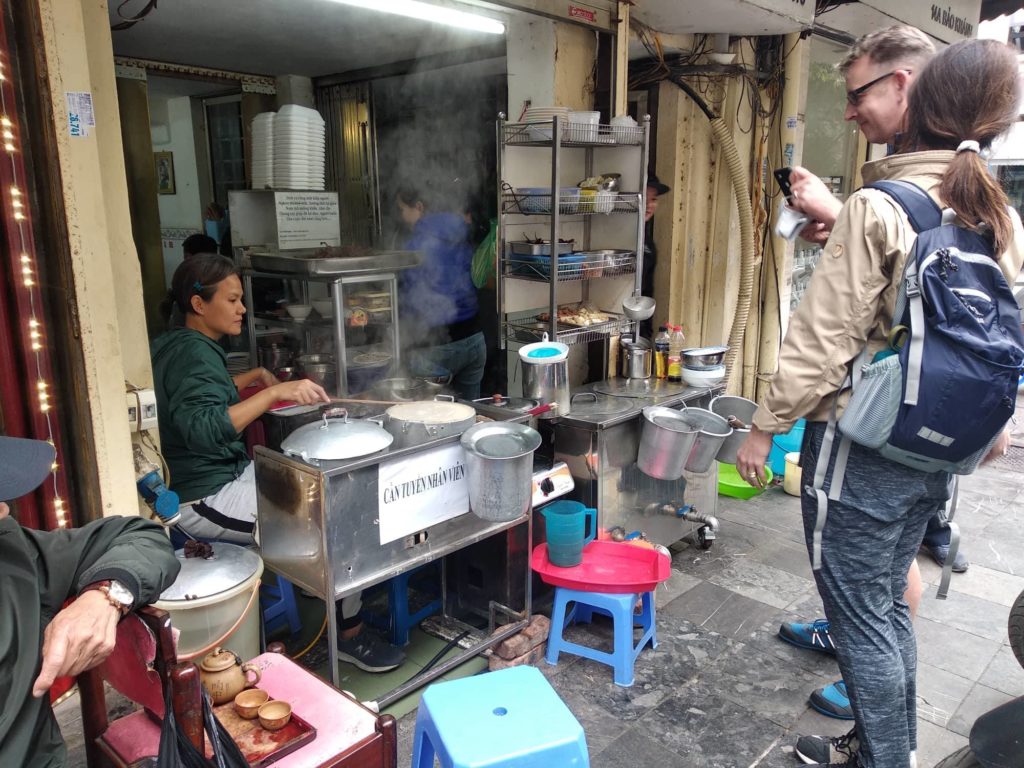
The street food walking tour run by highly rated, and fittingly named, Hanoi Street Food Tours (74 Hàng Bạc Street) incorporates a bit of site seeing and a curious market tour, along with six to eight stops at street food spots you might otherwise, regrettably, pass. Expect to walk between two and three kilometers during the three-hour tour, making room for the local beer, rice wine, egg coffee and dessert that are also included.

For an expertly-crafted fried spring roll, cruise by the woman dishing them out between 21 and 23 Hàng Bè at a makeshift stall. Don’t linger long. She prefers to keep her area clear for customers, but feel free to watch her work from across the street, where, if you’re lucky, there may be another hawker selling lemongrass-infused pork skewers that are equally crave-worthy. If so, double fist it as you head off in search of other take-away treats.
An easy to-go option and star of Vietnamese traditional fare is bánh mì, which translates simply as “bread,” but has come to be known as the savory, filling sandwich served on a French-inspired baguette. Keep an eye out for a little stall called Bahn Mi Mama (54 Lý Quốc Sư) located in an alley around the corner from the 19th century St. Joseph’s Cathedral. Go for the thập cẩm version, meaning “mixed,” to get all the fixings—pork, egg, pate, sausage, veggies and herbs. Or break it down to just your preferred ingredients. Vegetarian? Mama’s got you covered. Order honey and butter, a perfect combination for the bread’s crispy outside and soft, chewy inside.

For another play on meat mixed with fresh fruit and vegetables, try the nộm bò khô made at 10 Bo Ho Street. A mix of grated papaya and sliced beef, topped with fresh herbs, roast peanuts and vinegar sauce, this traditional salad hits all the right notes: savory, sour and slightly sweet.
Markets
To shop like a local, and get your eat on while you’re at it, hit up the market scene, both indoor and outdoor, by day and by night.
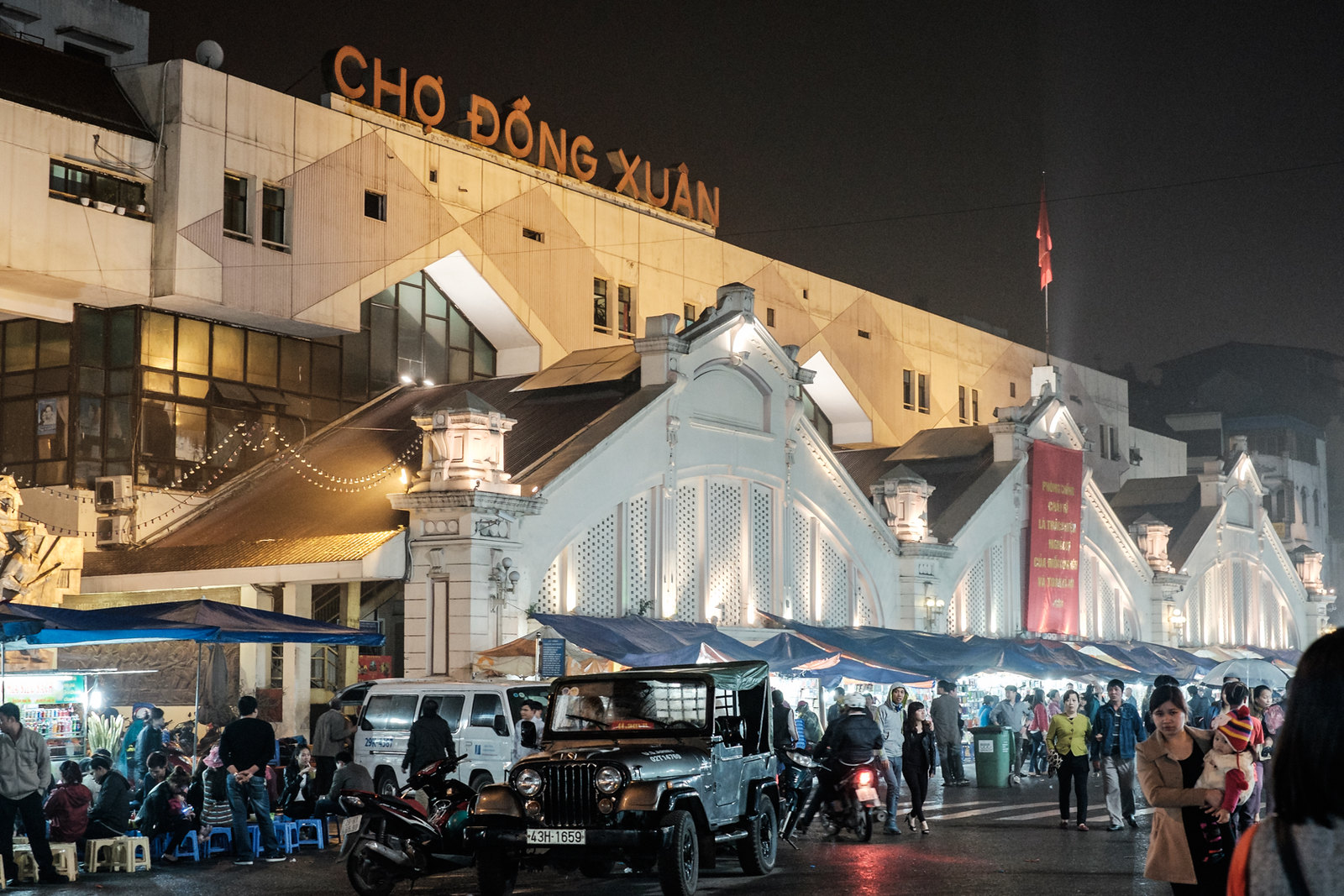
For an indoor market experience, head to Dong Xuan Market (Đồng Xuân Street, open 6:00 a.m. to 7 p.m.), a perfect hideaway when rain or heat forces you inside. Bustling since it opened in 1889, this four-story market on the northern edge of the Old Quarter is Hanoi’s largest. Rub shoulders with locals as they purchase their fresh meat, seafood and vegetables at the first floor’s wet market, where you’ll also find a fragrant array of flowers. Head here for wholesale-priced souvenirs, clothing, handicrafts and appliances, along with a dose of the fast-paced everyday commotion that is Vietnam. Of course, hawker stalls keep shoppers satiated. A specialty to find here is bún chả, grilled fatty pork, served with rice noodles, broth, fresh herbs and sauce. Feeling a little more daring? Search around the entrances to find the busy stall serving snail noodles, beloved for the soothing broth and the garden critters’ soft, chewy texture.
A smaller outdoor set-up in the heart of the Old Quarter, Hàng Bè Market (4 Nguyễn Thiện Thuật) is located just a few-minute’s walk from Hoan Kiem Lake. Locals come here for their daily food necessities, along with a healthy dose of socializing. Wander the aisles past vibrantly colored fruits and vegetables and freshly splayed seafood and meats. Buy fresh fruit to snack on before heading to a water puppet show or a leisurely walk around the lake.
If your timing is right, unwind with locals eating and shopping at the Old Quarter’s famed Weekend Night Market (8 Hàng Đào), open Friday, Saturday and Sunday (8:00 to 11:00 p.m.). While a fleet of stalls sell clothing, shoes, accessories and knickknacks, the main draw is the abundant street food. Feast on standards like phở; bánh mì; bún chả; skewered meats, seafood and vegetables; and exotic fresh fruits and juices. Eat slowly and share if you can: there are thousands of stalls along the market’s three-kilometer stretch, all vying for your taste buds’ attention. Along the way, catch a cultural performance or relax at a plastic table to watch swarms of mopeds and people navigate the night.
Credit: travelmag.com
Read more on the topic
.jpg)
Vietnam Tours
SEVEN TIPS FOR MORE SUSTAINABLE TRAVEL
SEVEN TIPS FOR MORE SUSTAINABLE TRAVEL
13/07/2021
NEW COVID-19 TOURISM POLICIES IN VIETNAM
13/07/2021
A SMALL GUIDE TO HANOI’S OLD QUARTER
13/07/2021

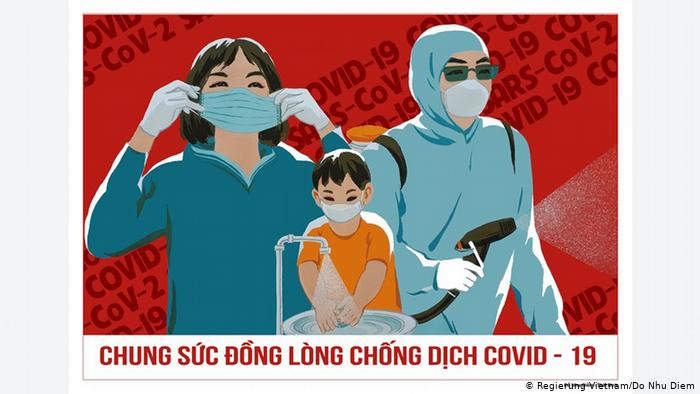
13/07/2021
I was born in Vietnam and I love my country a lot. My dream is to present Vietnam to friends from all over the world.